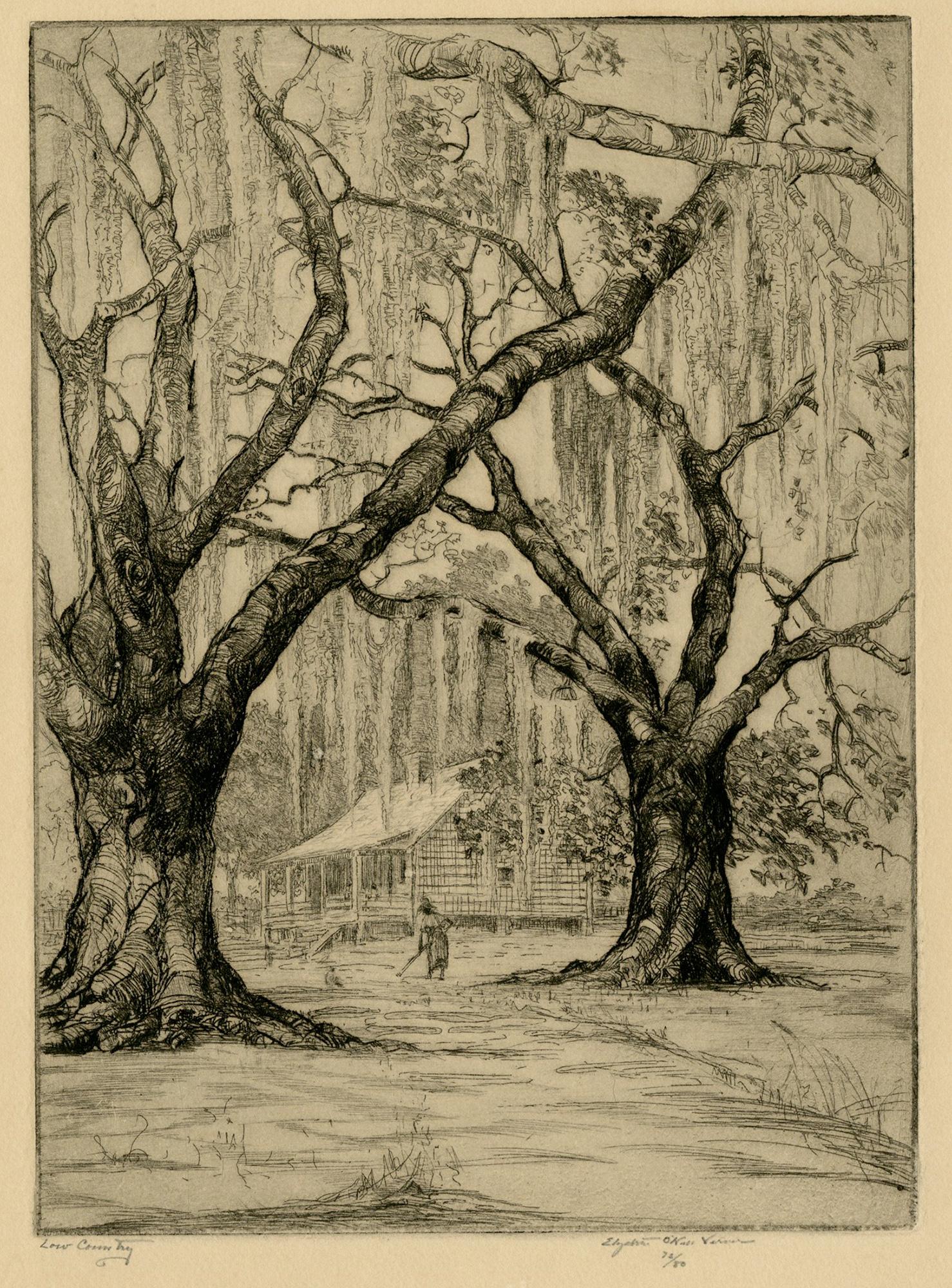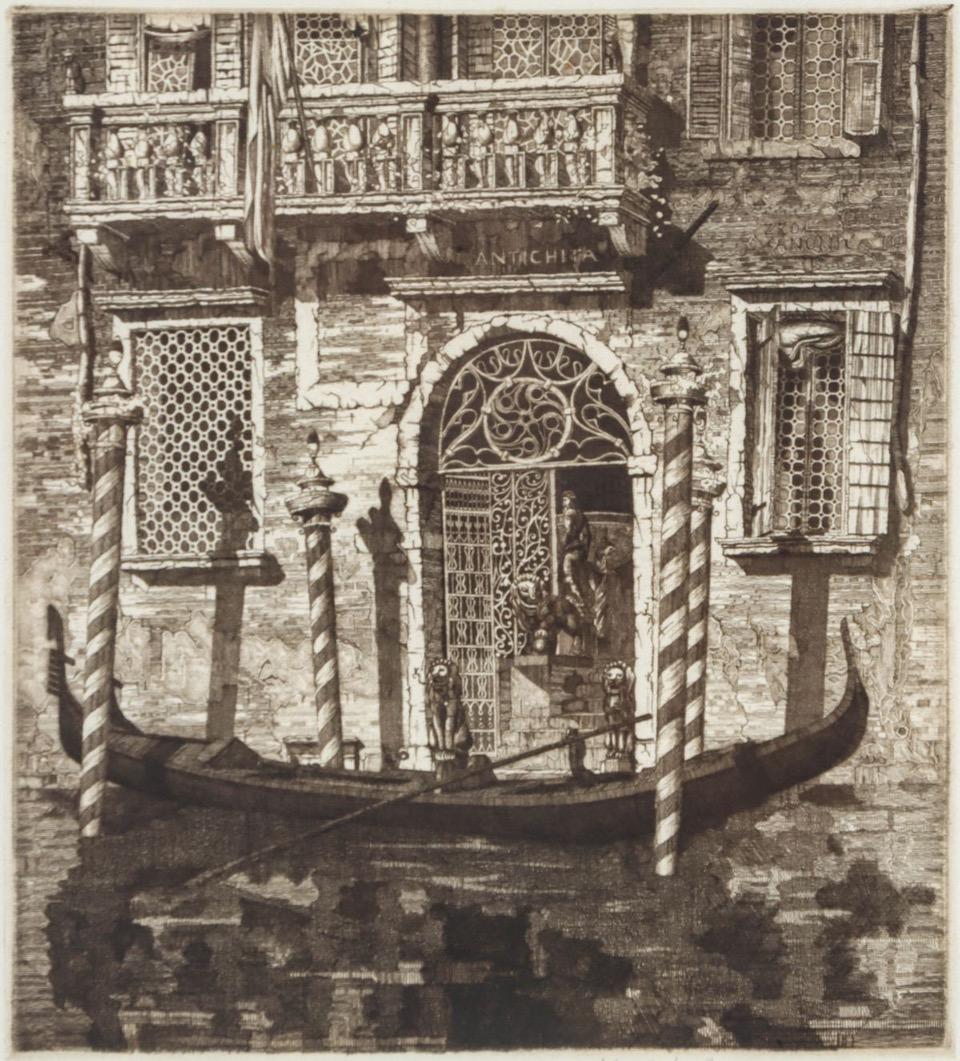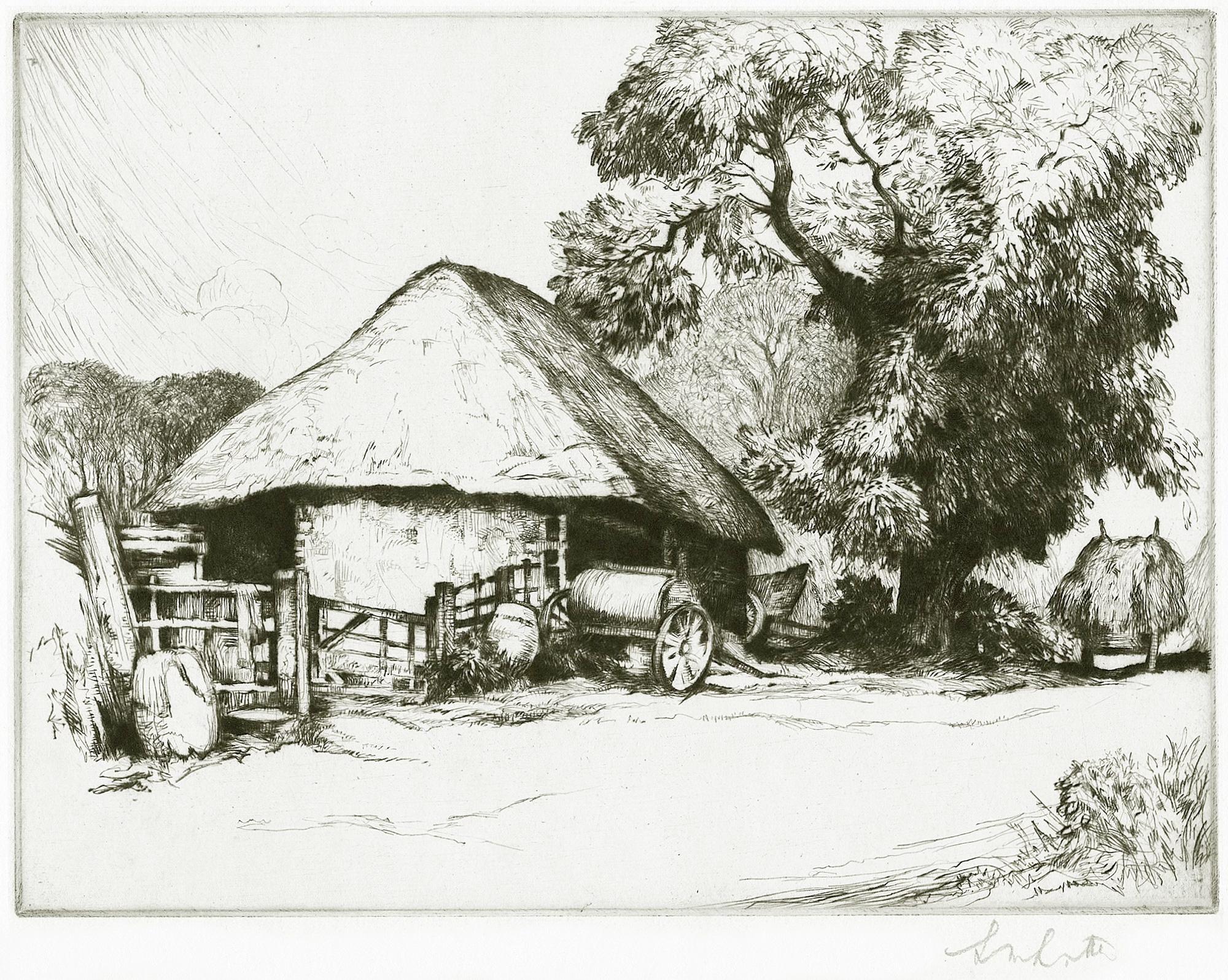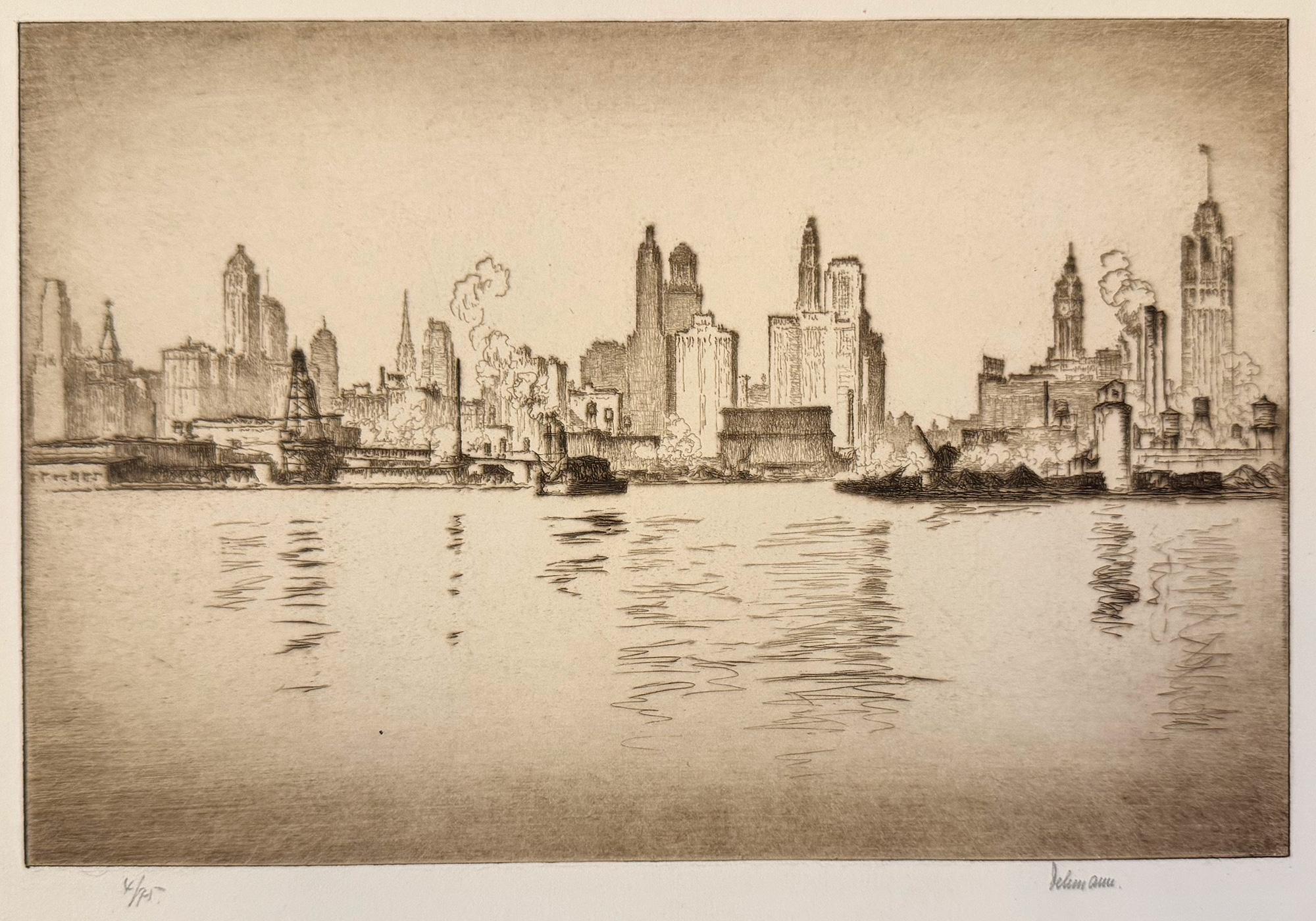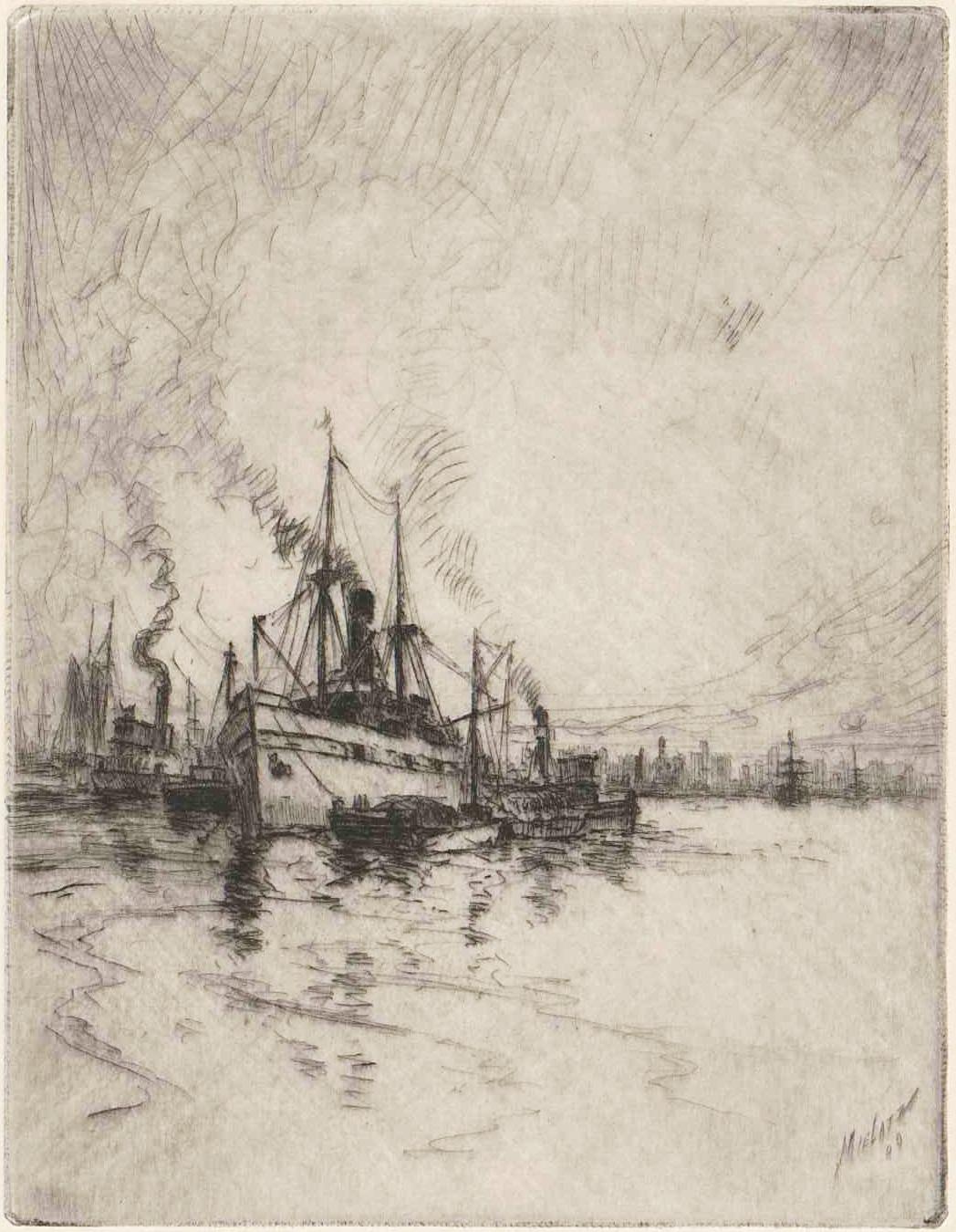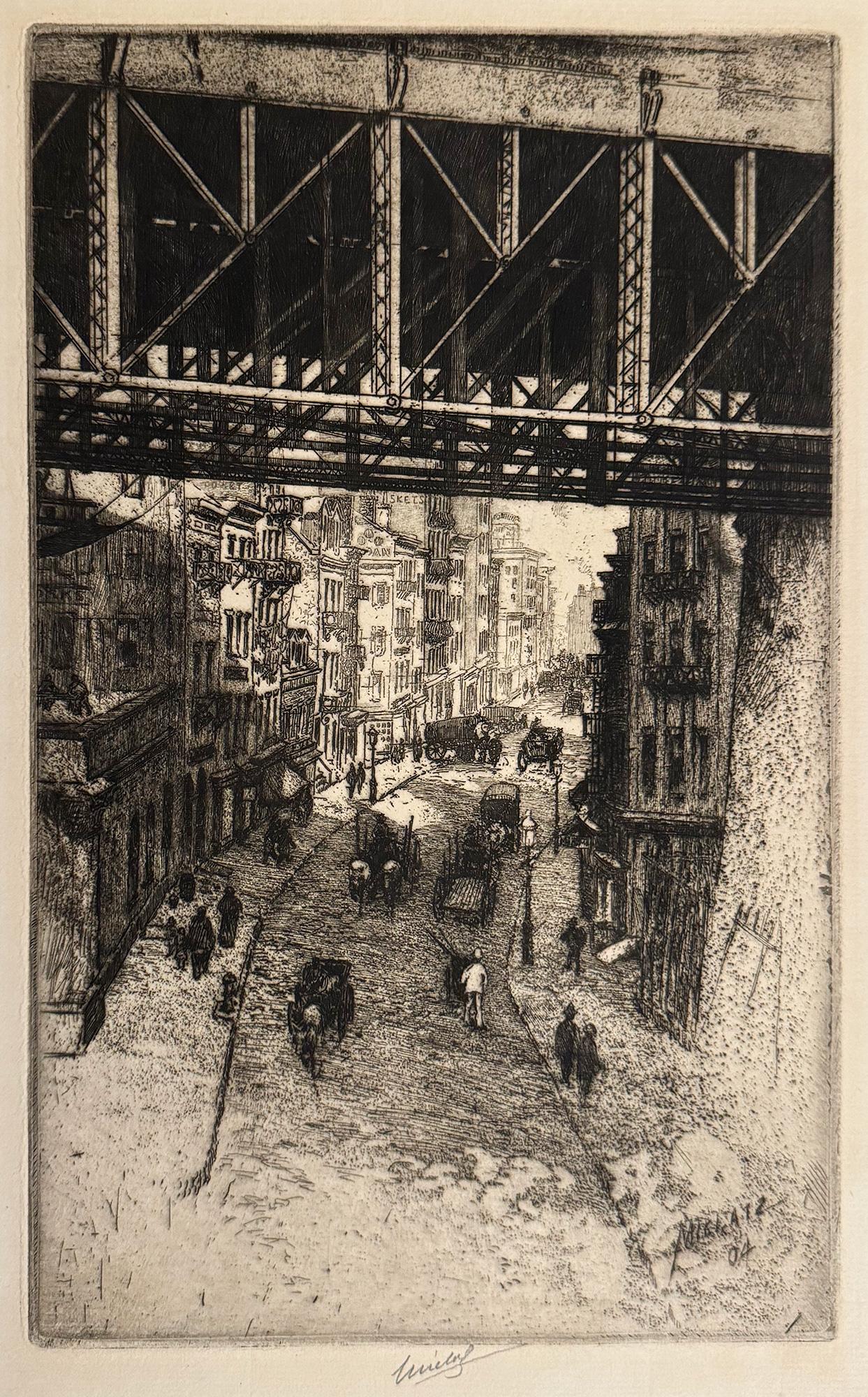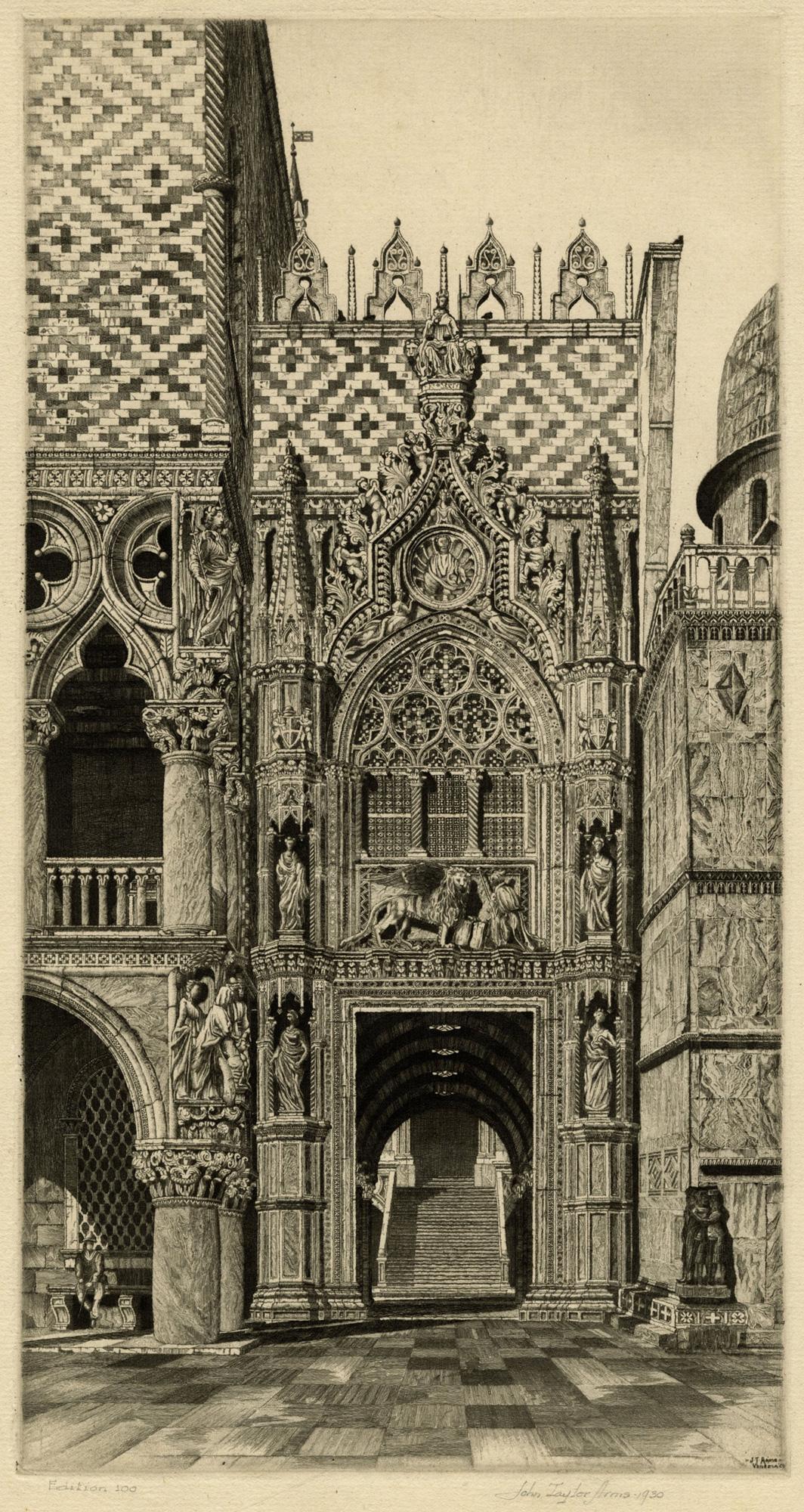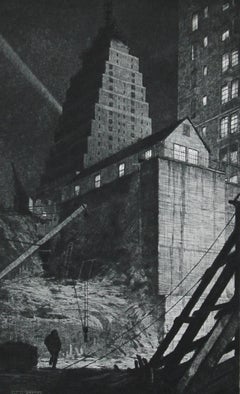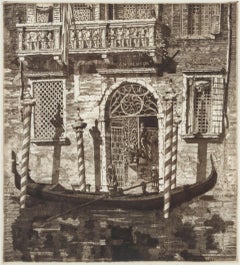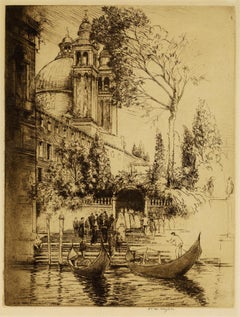
Caprice, or House on Cliff Walk, Newport, Rhode Island
View Similar Items
Want more images or videos?
Request additional images or videos from the seller
1 of 9
Clifford Isaac AddamsCaprice, or House on Cliff Walk, Newport, Rhode Island1931/32
1931/32
$200List Price
About the Item
- Creator:Clifford Isaac Addams (1876 - 1942, American)
- Creation Year:1931/32
- Dimensions:Height: 16 in (40.64 cm)Width: 20 in (50.8 cm)Depth: 0.5 in (1.27 cm)
- Medium:
- Movement & Style:
- Period:
- Condition:
- Gallery Location:Storrs, CT
- Reference Number:1stDibs: LU33522474761
About the Seller
5.0
Recognized Seller
These prestigious sellers are industry leaders and represent the highest echelon for item quality and design.
Established in 1977
1stDibs seller since 2016
725 sales on 1stDibs
Typical response time: 6 hours
Associations
International Fine Print Dealers Association
Authenticity Guarantee
In the unlikely event there’s an issue with an item’s authenticity, contact us within 1 year for a full refund. DetailsMoney-Back Guarantee
If your item is not as described, is damaged in transit, or does not arrive, contact us within 7 days for a full refund. Details24-Hour Cancellation
You have a 24-hour grace period in which to reconsider your purchase, with no questions asked.Vetted Professional Sellers
Our world-class sellers must adhere to strict standards for service and quality, maintaining the integrity of our listings.Price-Match Guarantee
If you find that a seller listed the same item for a lower price elsewhere, we’ll match it.Trusted Global Delivery
Our best-in-class carrier network provides specialized shipping options worldwide, including custom delivery.More From This Seller
View AllThe Fair
By James Abbott McNeill Whistler
Located in Storrs, CT
The Fair. 1895-96. Lithograph. Way 92, Levy 144, Tedeschi, Stratis and Spink 135 state ii. Image 9 1/4 x 6 1/2 (sheet 13 x 9 5/8). A fine impression printed on antique cream-laid paper. Way lists 15-lifetime impressions (Goulding printed...
Category
Late 19th Century American Modern Figurative Prints
Materials
Drypoint, Etching
$2,450 Sale Price
30% Off
Stoops in Snow
By Martin Lewis
Located in Storrs, CT
Stoops in Snow. 1930. Drypoint and sandpaper ground. McCarron catalog 89.state ii. 9 x 14 7/8 (sheet 13 1/4 x 18 7/16 ). Edition 115 recorded impressio...
Category
1930s American Modern Figurative Prints
Materials
Drypoint, Etching
$35,000 Sale Price
30% Off
Shadows on the Ramp
By Martin Lewis
Located in Storrs, CT
Shadows on the Ramp. 1927. Drypoint and sand ground. McCarron 64. 9 x 10 1/2 (sheet 12 3/8 x 14). Edition 75 recorded impressions. A rich, tonal impression with drypoint burr, printe...
Category
1920s American Modern Landscape Prints
Materials
Drypoint, Etching
Building a Babylon, Tudor City, NY.
By Martin Lewis
Located in Storrs, CT
McCarron 76. 12 7/8 x 7 7/8 (sheet 16 5/8 x 12 1/4). 6th trial proof (McCarron records 84 impressions including 4 trial proofs). Illustrated L'Amérique de la Dépression: Artistes En...
Category
Early 20th Century American Modern Landscape Prints
Materials
Drypoint, Etching
$11,000 Sale Price
26% Off
The Biggest of All; Telephone and Telegraph Building.
By Joseph Pennell
Located in Storrs, CT
The Biggest of All; Telephone and Telegraph Building. 1925. Etching. Wuerth 853. 9 7/8 x 11 7/8 (sheet 11 1/2 x 17 1/8). Edition probably 35. An atmospheric impression with plate tone, printed on antique laid paper...
Category
Early 20th Century American Modern Landscape Prints
Materials
Drypoint, Etching
$850 Sale Price
43% Off
The Gothic Spirit
By John Taylor Arms
Located in Storrs, CT
The Gothic Spirit (also called A Gargoyle, A Gothic Spirit). 1922. Etching and stipple. Fletcher 120. 11 5/8 x 7 (sheet 15 1/4 x 11 1/4). Gargoyle Series #8. Edition 130. Illustrated...
Category
1920s American Modern Landscape Prints
Materials
Drypoint, Etching
$2,500 Sale Price
28% Off
You May Also Like
Low Country (South Carolina)
By Elizabeth Verner
Located in Middletown, NY
An enchanting Southern landscape by the mother of the Charleston Renaissance.
A native of Charleston, South Carolina, and educated under the tutelage of Thomas Anshutz at The Pennsylvania Academy of Fine Arts, O'Neill Verner was a teacher, a mother, an artist, an ardent preservationist, and a skilled autodidact. Having previously focused on painting, in the early 1920s she found herself deeply moved by printmaking as a media, and especially so by the simple, peaceful themes and tableaus she discovered in Japanese art. She embarked on a effort to teach herself Japanese printmaking techniques, and in the process, produced the charming images of every day life in Charleston and its environs that earned her recognition as a cultural icon in her day, and in more modern times, as the mother of the Charleston Renaissance, which flourished well into the 1930s. In 1923 she opened a studio in Charleston where she focused on documenting the local color and the architecture and landscape that distinguishes Charleston as one of the South's most beautiful cities, all the while applying the gentle and poetic thematic sensibilities of Japanese printmaking. O'Neill Verner soon found herself in high demand when municipalities and institutions throughout the country sought commissions from her to document the beauty of their grounds and historic buildings. She worked as far north as the campuses of Harvard and Princeton, and extensively across the South, including in Savannah, Georgia, where through sweeping commissions she was able to marry her love of southern preservation and art. O'Neill Verner was a lifelong learner, and continued a path of edification that led her to study etching at the Central School of Art in London, to travel extensively through Europe, and to visit Japan in 1937, where she studied sumi (brush and ink) painting. She was a founding member of the Charleston Etchers Club, and the Southern States Art League. Her works are represented in the permanent collections of leading museums across the American south, and in major national institutions including the Metropolitan Museum of Art, Boston's Museum of Fine Art, and the Smithsonian American Art Museum. O'Neil Verner...
Category
Early 20th Century American Modern Landscape Prints
Materials
Archival Paper, Drypoint, Etching
Palazzo dell'Angelo
By John Taylor Arms
Located in Middletown, NY
Palazzo dell'Angelo
1931
Etching and drypoint on cream-colored, handmade laid paper with deckle edges, 7 1/4 x 6 3/4 inches (185 x 171 mm), edition of 100, full margins. Signed, dated and numbered "Ed. 100" in pencil, lower margin, second state (of three). Printed by Henry Carling, New York. Extremely minor mat tone and some inky residue in the top right corner, all unobtrusive and well outside of image area. An exquisite impression of this intricate image, with astonishing detail, and all the fine lines printing clearly. The image represents the first print which Arms printed on his own handmade paper. Framed handsomely with archival materials and museum grade glass in a wood gilt frame with a flower and garland motif.
Illustrated: Dorothy Noyes Arms, Hill Towns and Cities of Northern Italy, p. 180; Anderson, American Etchers Abroad 1880-1930; Eric Denker, Reflections & Undercurrents: Ernest Roth and Printmaking in Venice, 1900-1940, p. 116.
[Fletcher 233]
Born in 1887 in Washington DC, John Taylor Arms studied at Princeton University, and ultimately earned a degree in architecture at the Massachusetts Institute of Technology in 1912. With the outbreak of W.W.I, Arms served as an officer in the United States Navy, and it was during this time that he turned his focus to printmaking, having published his first etching in 1919. His first subjects were the Brooklyn Bridge, near the Navy Yard, and it was during his wartime travel that Arms created a series of extraordinarily detailed etchings based on Gothic cathedrals and churches he visited in France and Italy. He used what was available to him, namely sewing needles and a magnifying glass, to create the incredibly rich and fine detail that his etchings are known for. Upon his return to New York after the war, Arms enjoyed a successful career as a graphic artist, created a series of etchings of American cities, and published Handbook of Print Making and Print Makers (Macmillan, 1934). He served as President of the Society of American Graphic Artists, and in 1933, was made a full member of the National Academy of Design.
In its most modern incarnation, Palazzo dell'Angelo was constructed in or around 1570. The building, which has a rich and storied history, was erected upon the ruins of an earlier structure which predates the Gothic period. Some remnants of the earliest features of the residence were most certainly still visible when Arms visited, as they are today. Having a background in architecture, there's no question that Arms was moved by the beauty, history and ingenuity represented in the physical structure. One thing specifically gives away Arms's passion for the architecture, and that is the fact that he focused on the building's Moorish entranceway, balustrade, and two mullioned windows, and not on the curious Gothic era bas-relief of an angel nestled into the facade of the building, after which the structure is named. The sculpture itself doesn't appear in Arms's composition at all, despite the fact that it is the feature of the building that is most famous in its folklore. Arms instead focuses on the oldest portion of the architecture, even documenting some of the remnants of a fresco, and a funerary stele for the freedman Tito Mestrio Logismo, and his wife Mestria Sperata (visible above the water level, to the left of the door, behind the gondola), which was first described in 1436.
Among the many notable bits of history regarding the Palazzo, it has been documented that Tintoretto painted frescos of battle scenes on the facade of the building. The paintings have been lost to time and the elements, but not entirely to history. The empty frame...
Category
1930s American Modern Figurative Prints
Materials
Etching, Drypoint
Guardians of the Spire; Amiens Cathedral Number 2
By John Taylor Arms
Located in Middletown, NY
Guardians of the Spire; Amiens Cathedral Number 2
New York: 1937. Etching and drypoint on watermarked F.J. Head cream-colored, antique laid paper, 6 3/4 ...
Category
Mid-20th Century American Modern Figurative Prints
Materials
Drypoint, Etching
Steps to the Grand Canal, St. Mark's in the distance, Venice.
By Donald Shaw MacLaughlan
Located in Middletown, NY
A lovely view of Venice from the water.
Etching with drypoint on antique cream laid paper with a large figural watermark, signed in pencil, lower right. 14 1/4 x 11 inches (362 x 280...
Category
Early 20th Century American Modern Landscape Prints
Materials
Laid Paper, Drypoint, Etching
Irving Guyer, Christmas Trees on Second Street (NYC)
By Irving Guyer
Located in New York, NY
Philadelphia-born Irving Guyer attended the Art Students League and worked in New York City before moving to California. This print is signed and titled i...
Category
1930s American Modern Figurative Prints
Materials
Drypoint, Etching
Chicago Skyline
By Paul Schumann
Located in Middletown, NY
A beautiful turn-of-the-century lake view of Chicago by an American artist known for his Texas landscapes.
Etching with drypoint on watermarked Umbria laid paper with deckle edges, 7 1/4 x 10 7/8 inches (182 x 275 mm), full margins. Signed and numbered 4/25 in pencil, lower margin. In good condition with adhesive residue at the sheet edges on the verso, does not show through to the recto. A lovely Lake Michigan landscape...
Category
Early 20th Century American Modern Landscape Prints
Materials
Handmade Paper, Etching, Drypoint
